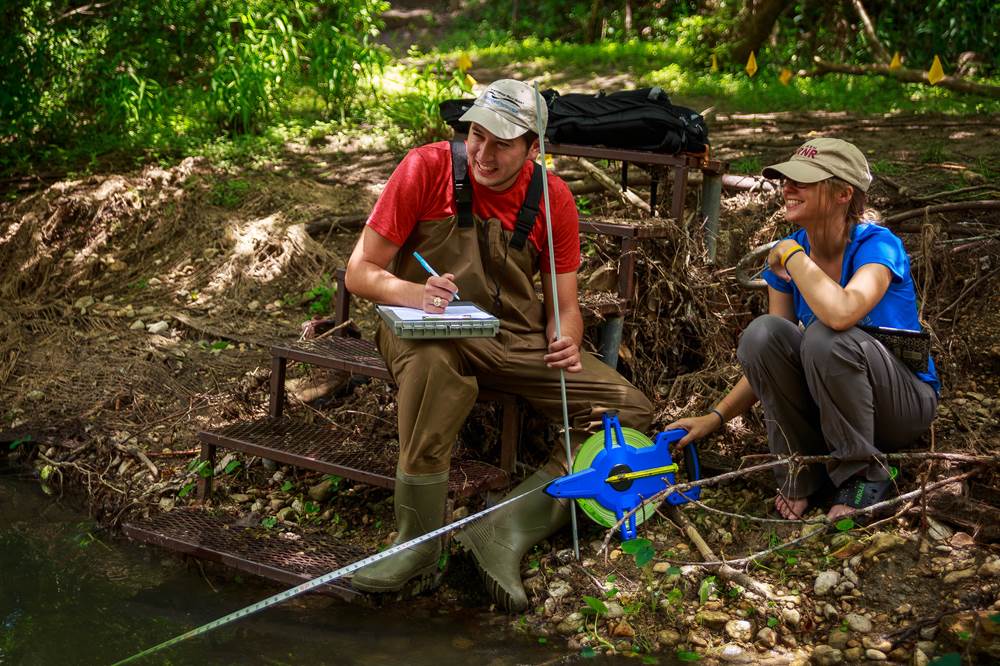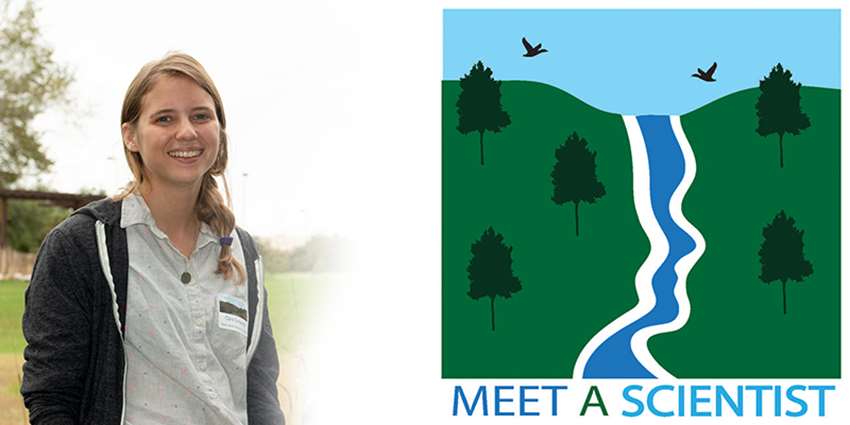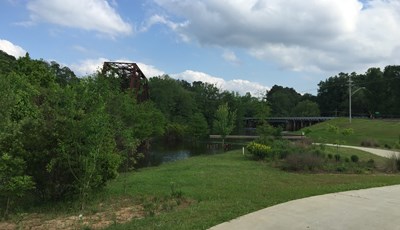From a math major to a watershed saver, Clare Entwistle, Texas Water Resources Institute (TWRI) research associate, knows that protecting riparian areas is important for the future of Texas.
Currently, Entwistle plans and facilitates riparian and stream restoration workshops held across Texas. She works closely with area stakeholders to educate and inform watershed residents about the importance of these ecosystems.
Riparian areas are the ecosystems that occur along the banks of a watercourse, stream, brook or constructed water channel. They are typically densely vegetated, which provides many valuable ecosystem services, such as an aquatic habitat, improved water quality, reduced downstream flood intensity and stabilization of banks from erosion, Entwistle said.
Entwistle began her education at Kalamazoo College in Michigan, receiving a bachelor’s degree in math with a minor in biology. After graduation, she worked as an Americorps VISTA volunteer for the nonprofit organization FIRST, which brings STEM after-school activities to under-represented areas. Skills she learned during her time with Americorps have been useful in her current position with TWRI.
“The program required a lot of meetings and one-on-one conversations to foster interest and support for the programs,” Entwistle said. “These skills have helped me in watershed planning, especially when I go into new areas and need to build up stakeholder support.”
While math and water might seem unrelated, Entwistle is not surprised by the intersection between the two disciplines in her life.
“My interests have always been environmentally focused; I knew I wanted to work on helping to restore and conserve natural resources,” Entwistle said.
This interest heightened after a summer undergraduate research experience in physical oceanography. Entwistle presented a poster during a national conference and watched presentations about ocean and freshwater science. After the summer, Entwistle was excited to get more involved in the world of water.

Clare Entwistle, TWRI research associate, and Nathan Glavy, TWRI extension program specialist, collecting flow measurements on Geronimo Creek in Seguin, TX for TWRI’s Urban Riparian & Stream Restoration Program.
She began working for TWRI as a graduate research assistant in 2014 while she pursued her master’s in water management and hydrological science at Texas A&M University. Her master’s thesis focused on wetland trends in the coastal counties of Texas, using GIS to monitor wetland gains or losses from 2001-2011. Entwistle is wetland delineation certified, which allows her to determine wetland boundaries.
After graduation, Entwistle began working as a research associate for TWRI, based in San Antonio, Texas. Her typical week includes traveling for educational training, public meetings or visiting the urban stream restoration demonstration site on Geronimo Creek at the Irma Lewis Seguin Outdoor Learning Center.
Entwistle is currently working at the demonstration site to test if planting native vegetation along the banks of a moderately eroding stream will stabilize the bank and reduce sediment loss into the stream. The demonstration site and public outreach are important for protecting riparian areas and watercourses. Public outreach includes educating residents about the impacts of their actions on their watershed.
“Even if we don’t live along a stream, we all live and work in a watershed and our actions can impact the health of our streams and riparian areas,” Entwistle said.
To reduce your impact, Entwistle suggests picking up after your dog, refraining from dumping anything into a storm drain or sink and reducing bare ground on your property.
In the future, Entwistle hopes to continue working to communicate with the public to affect as many people as possible. She would like to collaborate with more partners to support green stormwater and restoration activities in urban centers.
“As urban areas continue to grow, we need to make sure that they grow in a way that protects our riparian and stream systems,” Entwistle said.



